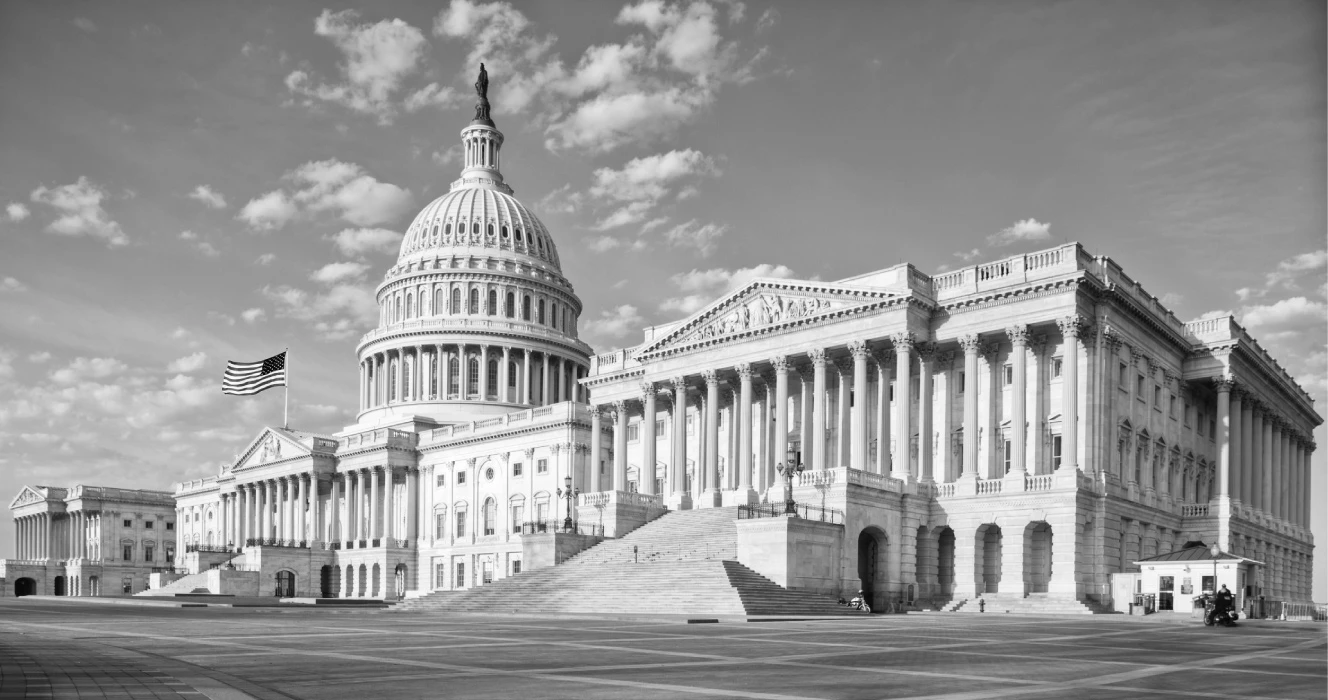ARTICLE
Markets in a Presidential Election Year

Every four years, the U.S. presidential election can have a major impact on policy, world relations and laws. But how do presidential elections affect the market?
How presidential elections affect the stock market
On Sunday, July 21, 2024 President Joe Biden announced he would not seek reelection. The next day, the total return of the S&P 500 was 1.08%, the highest daily return since June 5, 2024. The point: While President Biden’s news created a political whirlwind, it was not meaningfully disruptive to the markets.
Presidents impact policy, world relations and laws, but the markets usually act independently.
What history tells us.
In the year leading up to the election, stock and bond markets had a more muted performance than in other years. Since 1948, the S&P 500 increased 10.72% in the calendar year of the presidential election, but it increased even more, 11.6%, in the calendar year after the election. Markets are relatively muted in the lead-up as market participants typically hold off on major moves until the dust settles from the elections. Investors start to make moves once it is known who the president will be and their priorities. Simply put, markets and investors do not like uncertainty.
Also, the economy (Gross Domestic Product) has continued to march higher through all 46 presidential administrations. Yes, various legislation and executive orders impact certain sectors of the economy and markets (health care and energy, for example). But, other factors usually impact markets more than elections (inflation, labor, and geopolitical turmoil, for example).
“While the elections are important, the driver of stock returns is earnings,” said Don Molé, PhD, Senior Economist and Managing Director of Asset Allocation for 1834, division of Old National Bank. “Two main influences will have much to say on where stocks are headed. First, the new trend in Artificial Intelligence shows an acceleration in labor productivity. We’re now seeing companies create and scale their efficiency and move the needle in terms of return on investment.
Second, the Fed’s ability to lower interest rates this fall. That will help the housing sector recover and reduce small businesses’ financing costs. The economy will experience a degree of monetary stimulus from lower interest rates.”
While the presidential election gets a lot of attention, Congress has the power to support the bills and legislation proposed by the president or act as a counterbalance. Furthermore, it often takes months or even years for major legislation to pass Congress and for a president to sign it into law.
Regarding bond returns, Federal Reserve policy is the primary driver, not elections. Typical drivers (inflation) influence Fed policy. Interestingly, the Bloomberg Barclays U.S. Aggregate Index has posted a positive total return every presidential election year since 1980. However, it seems difficult to place any weight on that data point since the index has posted a positive return in 37 out of 41 years from 1980 to 2020. As for credit spreads, they tend to either narrow or largely remain stable in the immediate year following an election. In general, investors appear to somewhat shy away from corporate bonds until after election results come in when the uncertainty is removed.
Blue, red, or split.
Markets perform best when Republicans and Democrats each control a part of the Federal Government. That scenario typically leads to a balance of power, which the markets see as less worrisome due to policy gridlock. When either party sweeps the executive and legislative branches, short-term volatility often happens since some policy changes are easier to pass.
Presidential elections create many headlines (and headaches), but they should not sway your financial plan. The markets are always weighing whether the political platform is helping money flow into capital markets or hindering it. Regardless of administration, congressional policy, or tax codes, entrepreneurs and quality companies have found ways to innovate, grow revenue over time, and make profits. Our view on investing, as always, is to stay disciplined and focus on the long term.
Sources: Crandall, Pierce & Co, Forbes, Barron’s, Standard & Poor’s, Credit Sites, Barclays.
